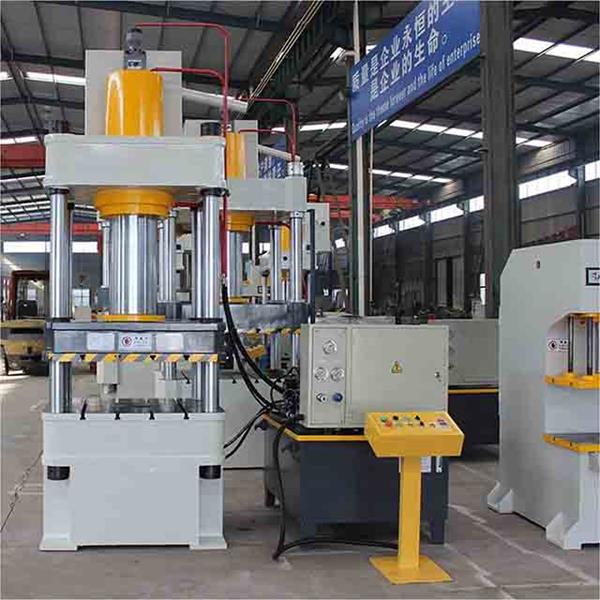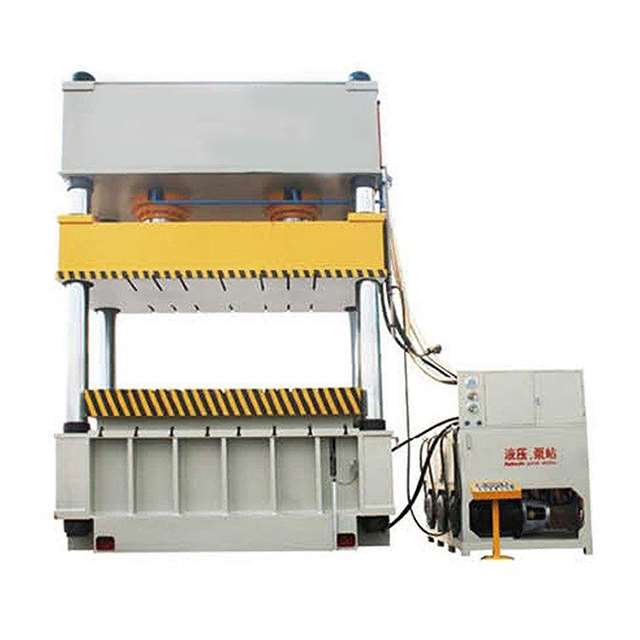News
Pressure Loss in Four-Column Hydraulic Presses
The four-column hydraulic press, also known as an oil press, uses the static pressure of hydraulic oil delivered by the pump to process materials such as metals, plastics, rubber, wood, and powders. It operates with an independent power mechanism and electrical system, featuring centralized button control with three operation modes: adjustment, manual, and semi-automatic. Like any hydraulic equipment, the four-column hydraulic press is prone to pressure loss, which can impact performance. Understanding the causes of pressure loss and how to debug the system can help ensure efficient operation.


Pressure loss in a four-column hydraulic press typically occurs due to friction and turbulence in the hydraulic oil flow. As hydraulic oil flows through pipes, the friction between the oil and the internal pipe walls creates resistance, which increases with pipe length. The longer the pipeline, the greater the friction, leading to more pressure loss. Additionally, when the hydraulic oil passes through elbows, joints, valve ports, and other components, it creates turbulence, which results in local pressure losses.
The total pressure loss is the sum of the frictional loss and local losses. To minimize pressure loss, several steps can be taken. For example, reducing the flow rate of the hydraulic oil lowers friction and pressure loss. Shortening the length of hydraulic pipes and minimizing the number of bends can also reduce resistance. Additionally, improving the smoothness of the pipe walls decreases friction and contributes to better system efficiency.


To adjust the pressure of the four-column hydraulic press, it’s important to ensure that the system pressure never exceeds the rated pressure of the pump. The working pressure depends on the load, which is automatically generated. The system pressure should be set to the maximum working pressure the press can handle, typically the nominal pressure.
The first step in adjusting the pressure is to reduce the pressure of the relief valve and close the pump outlet between the throttle valve and the reversing valve. Gradually increase the pump outlet pressure by adjusting the valve until the required pressure value is reached. It's essential that the maximum working pressure does not exceed the nominal pressure, which is the maximum pressure the system is designed to safely handle.


Begin by turning the action adjustment knob on the electric cabinet door to the “adjustment” position. Then, press and hold the "two-hand operation" button. The work surface of the hydraulic press will descend quickly, and as the fast-to-slow stroke switch is triggered, it will slow down. Once the upper and lower molds are closed, stop the downward motion and check the pressure gauge on the main cylinder. Note the indicated pressure reading.
Next, press the "return" button to move the work surface upward. When the upward motion stops, rotate the pressure adjustment nut. Turn the nut clockwise to increase the pressure or counterclockwise to decrease it. Repeat the process until the desired pressure is achieved.
In conclusion, managing pressure effectively is key to maintaining the performance and longevity of a four-column hydraulic press. By understanding the factors that contribute to pressure loss and following proper debugging procedures, operators can ensure optimal pressure levels and efficient operation. If you need further assistance with pressure adjustments or any technical concerns regarding your hydraulic press, our expert team is here to help.
CATEGORIES
News
Contact Us
Tel:0086-13394110095
Fax:0086-411-39015062
Phone:0086-13394110095
Email:liu@weldcnc.com
Add:20# Ganwan Street, Zhongshan District, Dalian City, China

